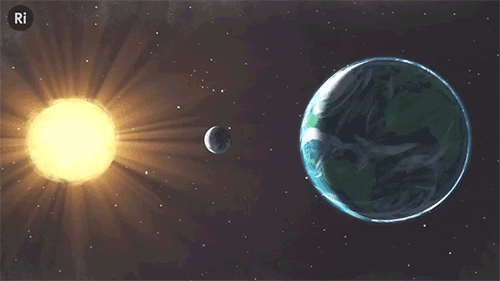Withstanding A Blast Of Electricity From A Huge Tesla Coil Using A Faraday Cage


Withstanding a blast of electricity from a huge Tesla coil using a Faraday cage
A Faraday cage shields the interior from external electromagnetic radiation and electrical fields by channelling electricity through the cage, providing constant voltage on all sides of the enclosure. Since the difference in voltage is the measure of electrical potential, no current flows through the interior space of the cage. In our daily lives we are surrounded by this invention. Faraday cages can be found in microwave ovens, elevators and around our computer cables (the shield around cables such as USB’s protects the internal conductor from external electrical noise). Even in your everyday car or plane journey you are surrounded by a Faraday cage protecting you from the adverse effects of electrical fields such as lightning.
Watch the full clip in the 2016 CHRISTMAS LECTURES, ‘Supercharged: Fuelling the future’.
More Posts from T-sci-eng and Others




Elevated Bus That Drives Above Traffic Jams

Fight waves with more waves!
A tsunami’s immense wall of water may not be stoppable. But there may be a way to take the ferocious force of nature down a few notches, using a pair of counterwaves.
If released at the right moment, a type of sound wave known as an acoustic-gravity wave could subdue a tsunami, applied mathematician Usama Kadri of Cardiff University in Wales reports January 23 in Heliyon. These acoustic-gravity waves, which reach deep below the ocean’s surface, can stretch tens or hundreds of kilometers and easily travel long distances at high speeds.










But that’s not all it can do. Microsoft and NASA teamed up to “bring” you, yes you, to Mars.
Follow @the-future-now

The Amateur Cloud Watching Handbook (#1)
Cloud watching is one of the most pleasurable activities on the planet. You don’t need any fancy equipments or spend money to experience it. Just find a spot to rest and witness the show that nature has to offer.
It is the most breathtaking experiences one can ever resonate with.
Fellow cloud watchers from the past have identified 3 primarily forms of clouds that seems to be consistent everywhere and have named it based on its structure, for the sake of convenience.
Cirrus

Cirrus in Latin means Tendril or hair. The clouds that are like long slithers in the sky, are called by this name.

Cumulus

Cumulus in Latin means Heap or pile. They just look heaps of white floaty objects in the sky.

Stratus

Status in Latin means Layer or sheet. They occur when startas of clouds stack on top of each other.

Clouds are constantly merging and doing all sorts of crazy stuff and they rarely maintain the same shape as you might have already observed
To account for this, dude named Howard brilliantly came up with a elegant nomenclature.
If a Cirrus type cloud after some time transforms into a Stratus type, it is known as Cirrostratus.
If a Cirrus type cloud after some time transforms into a Cumulus type, it is known as Cirrocumulus
If a Stratus type cloud after some time transforms into a Cumulus type, it is known as Stratocumulus
And so on, you get the idea right. By merely observing the transformation pattern of the clouds, you can tell its name.
This helps in setting up something of a standard to express in words what you behold, although it will never exactly be the same that someone else has in mind.
Note on Language

Language is our means of expression. Sometimes we stick with the conventions that had been established by pioneers. Now, that doesn’t need to be the easiest way.
For instance QWERTY keyboard is not the best keyboard to type in, but we still follow it as a convention.

Fortunately, cloud watching conventions are so much intuitive than many others out there!
Have a good day.
PC: Ted-ed PiccoloNamek, Nissim Angdembay
( Part -2 coming out soon )

Due to the Mandela Effect, we remember things that didn’t happen or exist. Get the answer and why in our NEW VID: https://youtu.be/hvu4D1jngCY

What have eclipses ever done for science? Quite a lot, actually!
The first measurement of the width of the Atlantic ocean in the 16th Century



When British settlers arrived in Virginia in the US, they weren’t sure how far across the globe they’d gone. They recorded the local time of a total eclipse of the moon - which is seen all across the night-time side of the planet. Their colleagues in London did the same, and when the travellers returned they could figure out the five hour time difference.
Edmond Halley discovered that the moon is moving away from the Earth


Halley realised you could back-calculate when previous eclipses would have occurred. But he noticed a mismatch between his predictions and the history books. The reason, he discovered, what that he was assuming the moon stayed the same distance from the Earth. It is actually getting further at about the rate your fingernails grow. And that means that one day (in a few million years, that is), the moon will be too far away to create any more total solar eclipses.
In 1919 a solar eclipse proved Einstein’s theory of relativity

Einstein’s theory predicted that the sun’s gravity should bend the light of nearby stars, meaning that in theory we should be able to see stars that are hidden just behind the sun. However, sunlight always blocks our view of these stars, and it was only during a solar eclipse that there was a short window to see if hidden stars were visible, as predicted. Astronomer Arthur Eddington travelled to West Africa and took photos that proved Einstein right.
Scientists still use solar eclipses today
It’s very hard to study the sun’s corona - a tenuous hot gas, which just one millionth of the light intensity of the sun. The shapes and lines of the corona show the nature of the sun’s magnetic field, and are only visible to study during an eclipse. NASA are also using this opportunity to help create the first thermal map of Mercury!
Want to know more? Watch our full video.





In mathematics there is a concept known as ‘Conformal Mapping’ which allows you convert a given shape to a completely different one by making a transformation.
In the joukowski transform you take all the points on a circle and apply the following transform:

And the resulting transformed points resemble an aerofoil shape. Pretty cool huh ?
** Conformal mappings are a really cool topic in complex analysis but also equally extensive. If you want to know more about them click here




Ceramics: Aluminum Nitride
First synthesized in the late 1800s, aluminum nitride’s potential wasn’t realized until a hundred years later in the late 1900s. AlN is a ceramic with high thermal conductivity but is an electrical insulator. It is classified as a covalent compound, the only stable compound in the binary Al-N system.
AlN is similar in properties to beryllium oxide (BeO), but is cheaper and has less of a potential to be toxic. In addition to the properties mentioned above, this ceramic also has high chemical resistance and exhibits piezoelectric properties.
Thanks to its thermal and electrical conductivity properties, AlN is useful in microelectronics. It is used in microelectronic packaging, surface acoustic wave sensors, in RF filters, as a crucible for the growth of gallium arsenide crystals, in piezoelectric MEMs applications, and many more. In addition, the wurtzite phase of aluminum nitride, w-AlN, is a wide band gap semiconductor material, with potential applications in deep ultraviolet optoelectronics.
Because AlN is a covalent compound, high pressures or sintering aids are required to assist densification during production. Typical additives include rare-earth or alkaline-earth oxides, such as yttrium compounds. The additives and sintering conditions used can alter the properties of commercially available grades of AlN.
Sources: ( 1 ) ( 2 - images 2 and 3 ) ( 3 - images 1 and 4 ) ( 4 )

Vantablack absorbs 99% of light and is the darkest material ever made.






Okay, I’ve really missed talking about teratology.
These dogs have polydactyl, but what’s interesting is that the extra dew claws can move independently of one another and grip things. They’re only found on the hind feet giving the dogs a distinctly velociraptor look
The Beauceron is an ancient breed, and no one has a definitive answer of why they have these, but the prevailing theory is that they were bred to do a lot of rock climbing because they were used for herding and hunting over rocky mountainous terrain.
Other places to see my posts: INSTAGRAM / FACEBOOK / ETSY / KICKSTARTER
-
 mjcutts-blog-blog liked this · 2 years ago
mjcutts-blog-blog liked this · 2 years ago -
 thekingmen25 liked this · 7 years ago
thekingmen25 liked this · 7 years ago -
 comtedemoney liked this · 7 years ago
comtedemoney liked this · 7 years ago -
 underbluegaze reblogged this · 7 years ago
underbluegaze reblogged this · 7 years ago -
 underbluegaze liked this · 7 years ago
underbluegaze liked this · 7 years ago -
 sucraloses-blog liked this · 7 years ago
sucraloses-blog liked this · 7 years ago -
 vitneymarkham reblogged this · 7 years ago
vitneymarkham reblogged this · 7 years ago -
 t-sci-eng reblogged this · 7 years ago
t-sci-eng reblogged this · 7 years ago -
 urcuterabbit-blog liked this · 7 years ago
urcuterabbit-blog liked this · 7 years ago -
 marrowtooths-trashbin liked this · 7 years ago
marrowtooths-trashbin liked this · 7 years ago -
 helioalan1 reblogged this · 7 years ago
helioalan1 reblogged this · 7 years ago -
 helioalan1 liked this · 7 years ago
helioalan1 liked this · 7 years ago -
 onyx456 liked this · 7 years ago
onyx456 liked this · 7 years ago -
 gizmo42424 liked this · 7 years ago
gizmo42424 liked this · 7 years ago -
 honeygordo liked this · 8 years ago
honeygordo liked this · 8 years ago -
 mossheartlesbian liked this · 8 years ago
mossheartlesbian liked this · 8 years ago -
 mossheartlesbian reblogged this · 8 years ago
mossheartlesbian reblogged this · 8 years ago -
 telltaletypist liked this · 8 years ago
telltaletypist liked this · 8 years ago -
 qwerty224561 liked this · 8 years ago
qwerty224561 liked this · 8 years ago -
 lesedacondyvidi reblogged this · 8 years ago
lesedacondyvidi reblogged this · 8 years ago -
 lesedacondyvidi liked this · 8 years ago
lesedacondyvidi liked this · 8 years ago -
 virtualwaluigi liked this · 8 years ago
virtualwaluigi liked this · 8 years ago -
 tumbleweed-chaser liked this · 8 years ago
tumbleweed-chaser liked this · 8 years ago -
 arcsoul-ace liked this · 8 years ago
arcsoul-ace liked this · 8 years ago -
 konst65 liked this · 8 years ago
konst65 liked this · 8 years ago -
 a-weird-writing-thing liked this · 8 years ago
a-weird-writing-thing liked this · 8 years ago -
 boced-blog liked this · 8 years ago
boced-blog liked this · 8 years ago -
 lucasearlgray liked this · 8 years ago
lucasearlgray liked this · 8 years ago -
 lwasylivna reblogged this · 8 years ago
lwasylivna reblogged this · 8 years ago -
 binaryaxiom liked this · 8 years ago
binaryaxiom liked this · 8 years ago -
 markhobley liked this · 8 years ago
markhobley liked this · 8 years ago -
 isaacmlg123-blog liked this · 8 years ago
isaacmlg123-blog liked this · 8 years ago -
 taurusmay11 liked this · 8 years ago
taurusmay11 liked this · 8 years ago -
 krispy-krispot liked this · 8 years ago
krispy-krispot liked this · 8 years ago -
 dev1257-blog liked this · 8 years ago
dev1257-blog liked this · 8 years ago -
 laelior reblogged this · 8 years ago
laelior reblogged this · 8 years ago -
 brigherthanthesun liked this · 8 years ago
brigherthanthesun liked this · 8 years ago